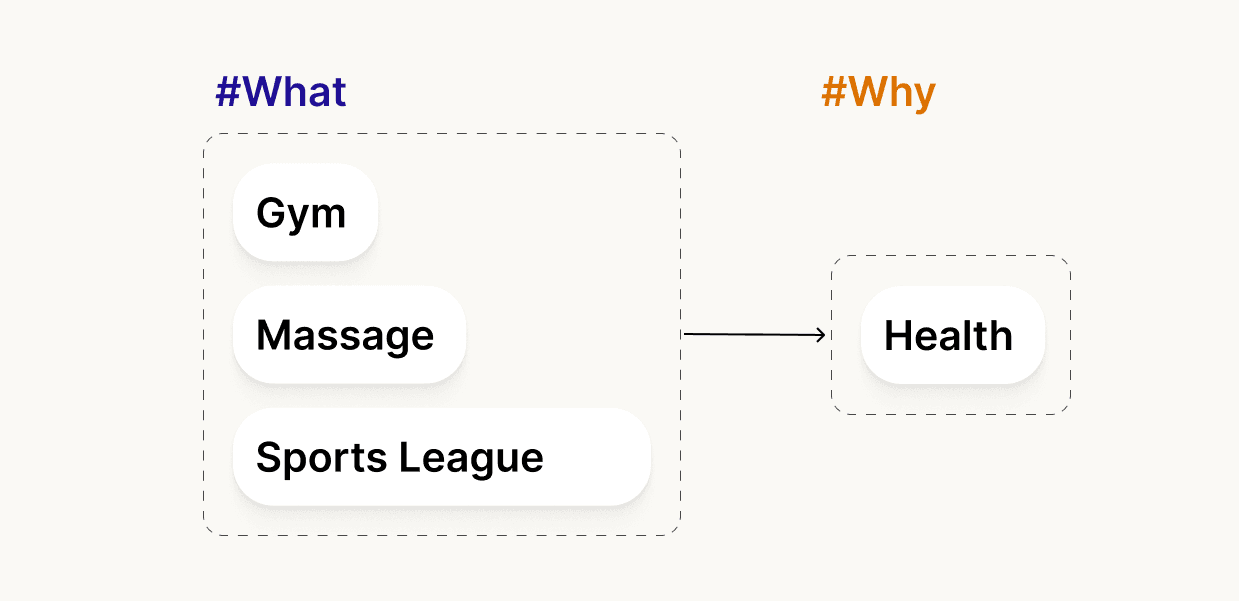Tips for using Groups and Tags
The main tip is to make it work for you. Intentions is your app designed around how your life evolves and changes, there's no right or wrong way to use the app.
Here are a few tips to unlock the potential of Groups & Tags.
Tip 1: Think about the questions you want to ask and the goals you have
Tags are connections points to aspects of your life, What, Why, Who, Where. Thinking through your personal goals and focus areas will help you decide which tags matter to you. For example, my girlfriend and I made a decision to spend more time in nature, so I added Where/Nature as a tag. In the future, as I look through Why/Dates, I can see how much of it was spent in Where/Nature.
Tip 2: How to think about #What and #Why: Granular vs. High-level

What tags are good for getting really granular on the transactions, and Why tags are good for broader buckets. For example, under Why/Health you might have What/Gym, What/Sports-League, and What/Massage. Generally speaking, you want a couple of Groups with very minimal tags and some with a lot. This way you can get both granular and high-level views when you need to.
Tip 3: MECE – Mutually Exclusive, Collectively Exhaustive
Within a Group, you generally want to avoid overlapping tags. If you think there are 2 tags within a Group that you could apply to most transactions of that kind, simplify and keep it to one.
For example; Why/Stupid, Why/Silly, Why/Necessary, Why/Mistake. They are all slightly different things, but since a "Mistake" can also be "Stupid", they're not quite mutually exclusive.
This is where adding tags from different Groups come in handy, to give dimensionality without cluttering the data. It's helpful to remember that you typically view Tags from one Group at a time, so having 2 tags within a Group that mean mostly the same thing can be redundant.
Written by Ken Abraham